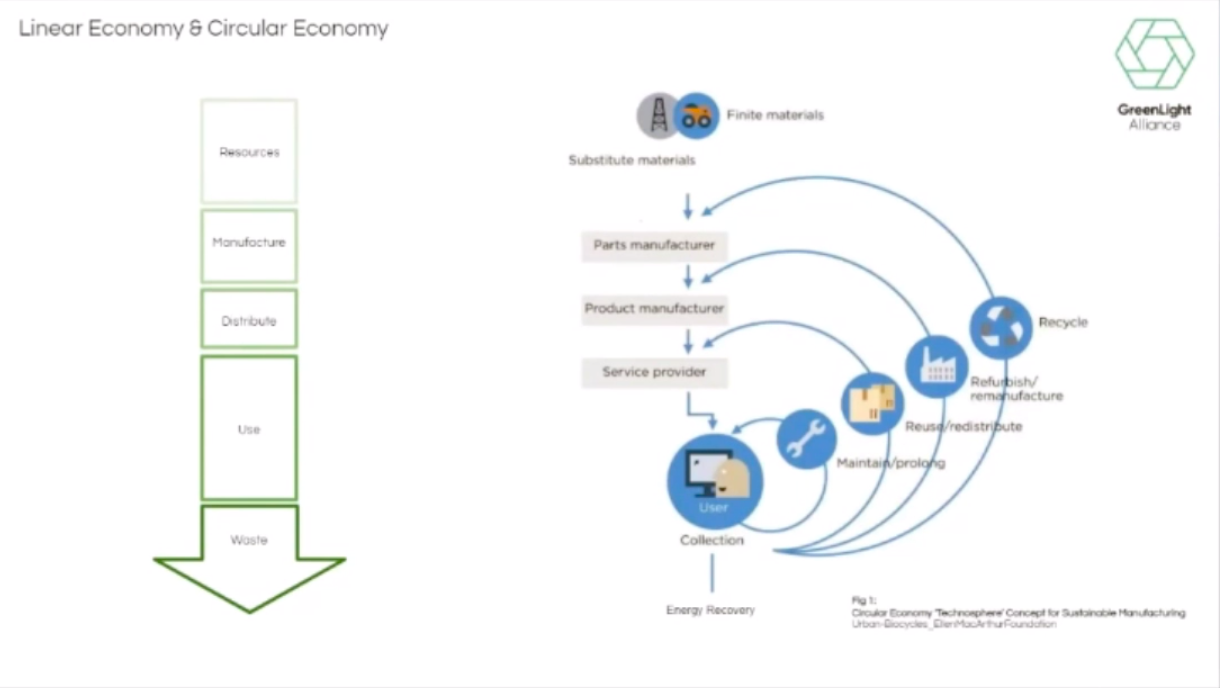Today, the Women in Lighting Project held the WIL Global Gathering to celebrate International Women’s Day and to discuss different topics in the lighting industry. One of the presentations focused on the topic of Lighting Design for the Circular Economy. The speakers were Emilio Hernandez and Anna Sandgren of Green Light Alliance. A circular economy is important for sustainability and environmental health, and they detailed how lighting designers can begin to help the industry achieve circularity.
One of the first points of the presentation was establishing the importance of circularity. Just recycling is not enough to offset waste and unsustainability. The current issue is the lack awareness of what the circular economy is and its benefits. Below is a chart that shows the process of circularity and the relationship between different types of companies in the industry.

Collaboration between lighting designers, specifiers, and manufacturers is necessary in order to help implement plans for circularity. Emilio Hernandez stated that manufacturers will not take these steps by themselves. Anna Sandgren outlined the steps designers need to take for circularity:
- Reduce use of unsustainable materials
- Ask clients if they’re open to using refurbished and reused products/materials
- Continue to gain education about circularity
- Start focusing on maintainability in a sustainable sense, not just as a selling point in spec sheets
The conversation then steered towards how will manufacturers contribute to circularity? Emilio Hernandez believes that an affordable, credible process for certifying products that meet circular standards is necessary in order to get manufacturers on board, as an expensive process will limit those who will want to get involved. The first products that should get certified are the ones manufacturers sell the most of, rather than new products. Focusing on the largest volume of products first will allow for a greater effect, and then other products can follow as it gets more efficient and possible to implement a circular economy on a large scale.
Refurbished products and materials will play a big part in making circularity possible. Giving products a longer lifespan and 2nd life through reuse will lower the amount of new products needing to be produced, which in turn will have the effect of less non-renewable resources used and less carbon footprint from manufacturing and shipping new materials. Both presenters believe it will largely be upon lighting designers to inform clients about refurbished products and suggest their use.


